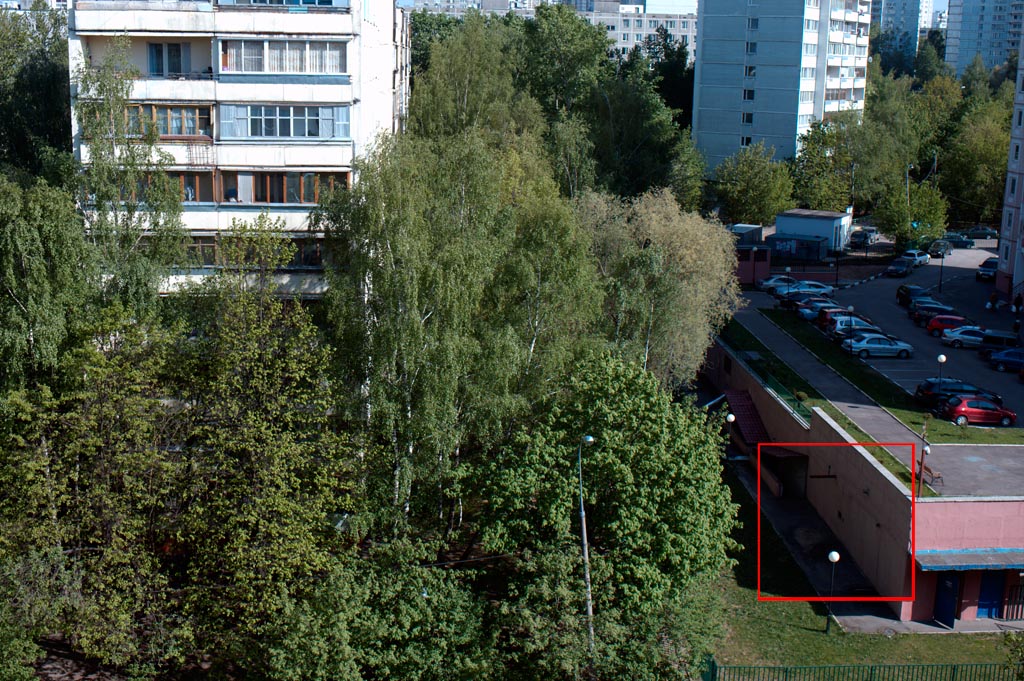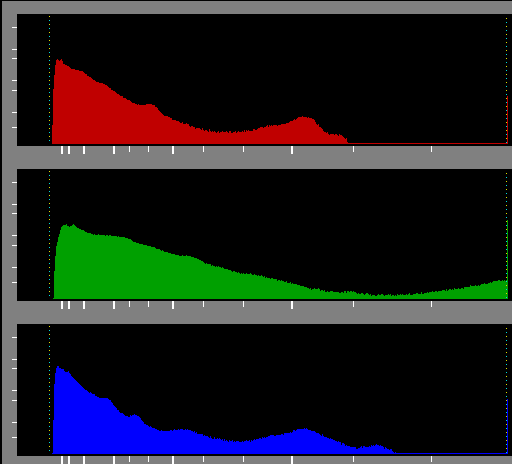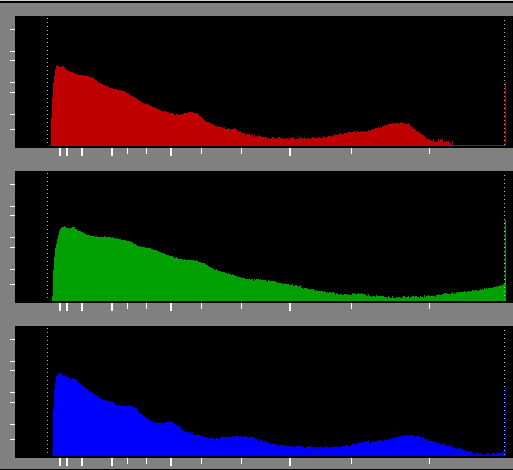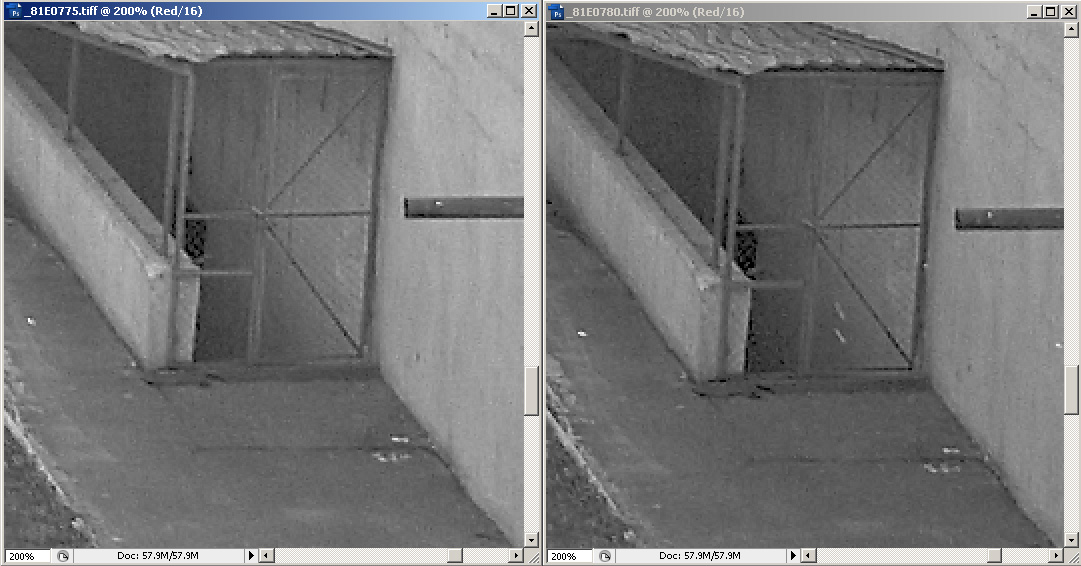Using Magenta Filter for Shooting With a dSLR Camera Under the Daylight
 In the previous article and during lengthy discussions on various forums, we promised to demonstrate the usefulness of magenta filters. Those filters compensate the imbalance between the sensitivities of color channels in digital cameras. Promises should be fulfilled, and having this filter, it takes nearly no time to prepare the demonstration given that you have that sunlight...
In the previous article and during lengthy discussions on various forums, we promised to demonstrate the usefulness of magenta filters. Those filters compensate the imbalance between the sensitivities of color channels in digital cameras. Promises should be fulfilled, and having this filter, it takes nearly no time to prepare the demonstration given that you have that sunlight...
The Test Shot
 I have already used the view from the balcony of my Moscow apartment as a test scene for quite some years. For different times of the day and during the year I can get very different lighting conditions, from back-lit to the side and front-lit scene. For this case, it was something between the front and side-light, which you can judge by the directions of the shadows.
I have already used the view from the balcony of my Moscow apartment as a test scene for quite some years. For different times of the day and during the year I can get very different lighting conditions, from back-lit to the side and front-lit scene. For this case, it was something between the front and side-light, which you can judge by the directions of the shadows.

 In this experiment, the camera used was a Canon 1D Mk III with a 35/1.4 lens mounted on it. I shot two series of seven frames each. The exposure difference between two consequent frames was 0.3 eV. The first series were shot without the filter, while the second with a Lee gel filter CC30M on the lens. One shot was chosen from each of the series for further analysis. The criteria for the choice was the very start of the clipping in the green channel.
In this experiment, the camera used was a Canon 1D Mk III with a 35/1.4 lens mounted on it. I shot two series of seven frames each. The exposure difference between two consequent frames was 0.3 eV. The first series were shot without the filter, while the second with a Lee gel filter CC30M on the lens. One shot was chosen from each of the series for further analysis. The criteria for the choice was the very start of the clipping in the green channel.
As it was expected, the start of the clipping occurred at different exposures.
- For the series without the filter, it was 1/100 s f/8
- For the series with the filter in for of the lens, the clipping started 1/50 s f/8
At a first glance, presuming the filter blocks only the green channel, this means that the red and the blue channels should be exposed one stop better. However, the blue and red channels are sensitive to a pretty wide range of spectrum. That's why the actual per channel exposures were changed less than that, as it is obvious when looking at the white balance coefficients.
- For the shot without the filter, both R and B coefficients are about 2, that is white balancing is equivalent to pushing these channels +1 eV.
- For the shot with the filter, both coefficients were about 1.3, that is about 0.4 eV push for white balancing.
For further analysis we are choosing an area which is marked on the shot with a red rectangle. Raw Photo Processor was used to process the shots. Sharpening and color blurring were switched off. Demosaicing was using the AHD algorithm. As we saw from the prior experiments, this converter is less prone to producing noise.
Noise In the Red Channel
 As it was shown in the previous article, the noise between different channels varies greatly. For daylight, the most noisy one is generally the red channel, and the least noise is found in the green channel. This is clearly visible in the shadows of flat-lit objects even before any post-processing. Post-processing through the increase of contrast and sharpening amplifies this effect and the difference just jumps out at the viewer. For shots of real life, this effect might not be so obvious, however in the neutral areas below the mid-tone like the triangle-shaped area of the mesh fence to the left of the staircase leading down to the basement the effect is visible without any adjustments in post-processing. In this dark triangle, the Standard Deviation in the red channel is 1.4 for the filtered shot, and 1.85 for the unfiltered shot. Given that the channel values are around 22, this is quite a difference.
As it was shown in the previous article, the noise between different channels varies greatly. For daylight, the most noisy one is generally the red channel, and the least noise is found in the green channel. This is clearly visible in the shadows of flat-lit objects even before any post-processing. Post-processing through the increase of contrast and sharpening amplifies this effect and the difference just jumps out at the viewer. For shots of real life, this effect might not be so obvious, however in the neutral areas below the mid-tone like the triangle-shaped area of the mesh fence to the left of the staircase leading down to the basement the effect is visible without any adjustments in post-processing. In this dark triangle, the Standard Deviation in the red channel is 1.4 for the filtered shot, and 1.85 for the unfiltered shot. Given that the channel values are around 22, this is quite a difference.
If one starts to push the shadows from 21-22 to 42-44 and applies slight sharpening (300%, 0.5, threshold 10) he gets something like illustration provided here, where to the left is the crop from the filtered image, while to the right, there is the crop from the image shot without the filter.
Looks like the filter used for this experiment is not strong enough, and the experiments should be repeated with a filter of a higher density, however even with CC30M filter, the difference is quite obvious.
Pro et Contra
As we can see, the filter deprived us of one stop of light, and helped slightly more then half a stop to avoid the imbalance of the channels. It is possible that a filter which will attenuate the light for one and a half stop will improve the situation even further. In other words
- If there is enough light (say when shooting a landscape using a tripod) and the possibility that post-processing of shadow areas is quite possible, the filter will improve the situation.
- If there is not enough light, the filter will make the situation worse.
The price of the solution is about $40 ( gel filter CC30M or CC40M plus Lee Gel Snap Holder). The Gel Snap Holder can be mounted on any lens, with the diameter of up to 82 mm, and on most flashguns. One size fits all.

Recent comments